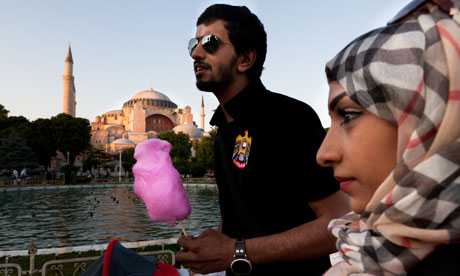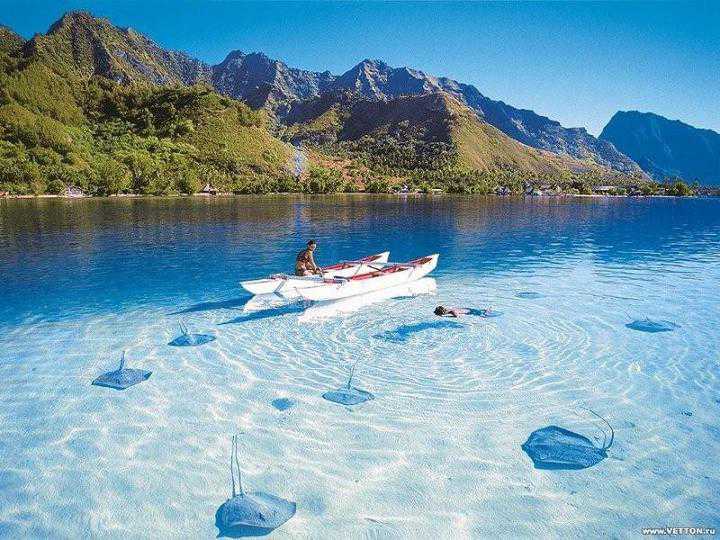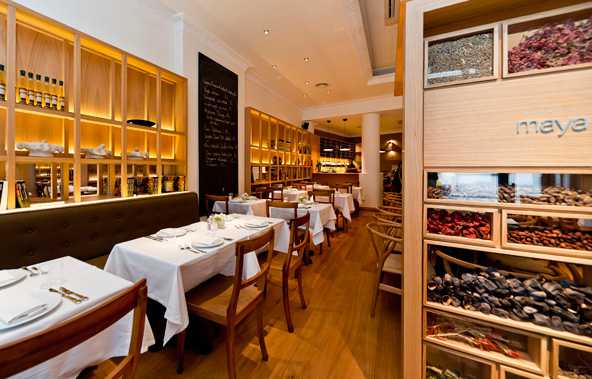Tourists from Gulf countries prefer Istanbul and Black Sea coast over usual summer destinations of Egypt and Syria
Constanze Letsch in Istanbul, guardian.co.uk
Arab Tourists in Turkey

Muhammad al-Menhali and wife Imad from Abu Dhabi who normally go to Egypt, enjoy their first trip to Turkey where they say they ‘feel safer’. Photograph: Jonathan Lewis
The Arab spring is fuelling a Turkish summer as Saudis, Kuwaitis and other tourists from the Gulf states who would have previously spent summers in Syria or Egypt look further north.
Figures from the Turkish ministry of culture and tourism show bookings from Saudi Arabia and Kuwait are up by 75% and, with the beginning of Ramadan days away, hotels in Istanbul and the northwestern city of Bursa are fully booked.
Turkey’s new wave of Arab visitors in part attribute their presence in the country down to the instability in their usual summer holiday destinations.
“We come here now because there is so much trouble in other Arab countries,” said Muhammad al-Menhali from Abu Dhabi, who was in Turkey for the first time with his wife Imad and baby son. “We usually go to Egypt, but we feel safer in Turkey.”
In the Grand Bazaar in the historical Sultanahmet district of Istanbul, shopkeepers said they had noticed a significant increase in Arab tourists over the last year. “I like Turkey so much. The country feels familiar; I don’t feel like a stranger,” said Housiya al-Hamadi, strolling with six members of her family past market stalls offering hand-painted porcelain, silk scarves and touristic knick-knacks. Her only complaint was that few Turks speak English or Arabic. “We often have to communicate with hands and feet,” she laughed.
Approximately 1 million Arabs live in Turkey, and their language skills are now highly sought after. With Turkey having long steered away from its Arab neighbours and imperial Ottoman past, learning Arabic was considered backwards, necessary only for religious scholars. Now private language schools in Istanbul increasingly offer Arabic courses, and shops advertise sales positions for Arabic speakers.
Besides Istanbul, Arab tourists prefer the lush Black Sea coast, with Uzungöl and Trabzon topping the list. The sun and sea packages that draw British and German tourists to Antalya or Fethiye every year hold little attraction for tourists from the Middle East, according to Turkish travel agencies catering to Arab clients. “The Black Sea coast is green, and not as hot in the summer as their home countries,” said Abdülkadir Düger, general manager of Alharran Tours.
Simultaneously western European countries have become less appealing. “After 11 September, visa requirements became much stricter, visas for the UK and other European countries are now very hard to get for us,” said Oussama Salaha, a Jordanian who is now living in Saudi Arabia. “Turkey is a Muslim country, we don’t need to worry about halal food, the culture is close to our own. Veiled women don’t face any issues in Turkey. Saudi tourists don’t go to France any more since the French government banned the face veil.”
Düger suggested changes in Turkey’s foreign policy and its rapprochement with Arab countries had played a crucial role in its growing popularity with Arab tourists.
Over the past couple of years, the Turkish government has lifted visa requirements for Arab countries such as Syria, Qatar, Lebanon, Yemen and Jordan.
“Arabs are welcome guests in Turkey,” said Düger. “We will probably soon need more hotels to accommodate them all.”
via Arab spring fuels tourism boom for Turkey | World news | The Guardian.



